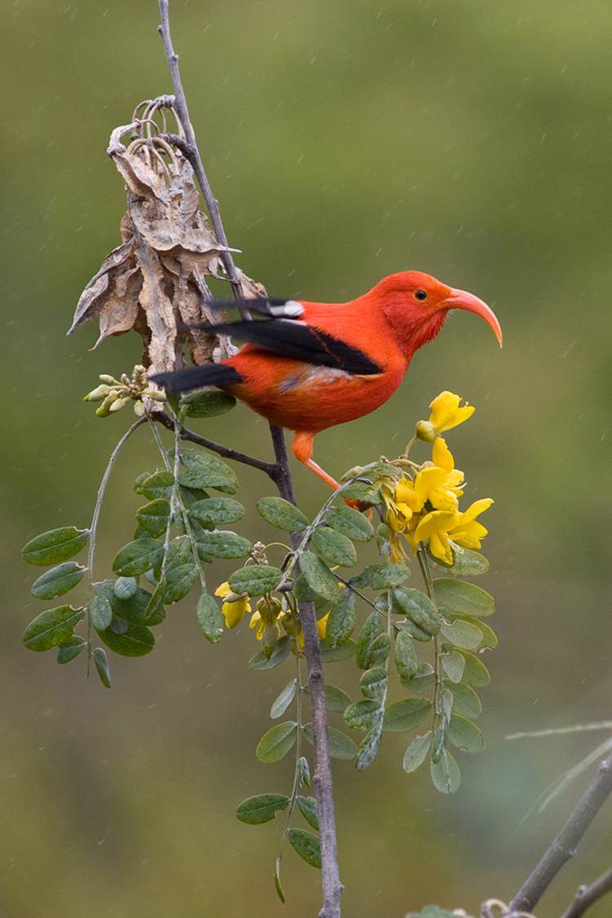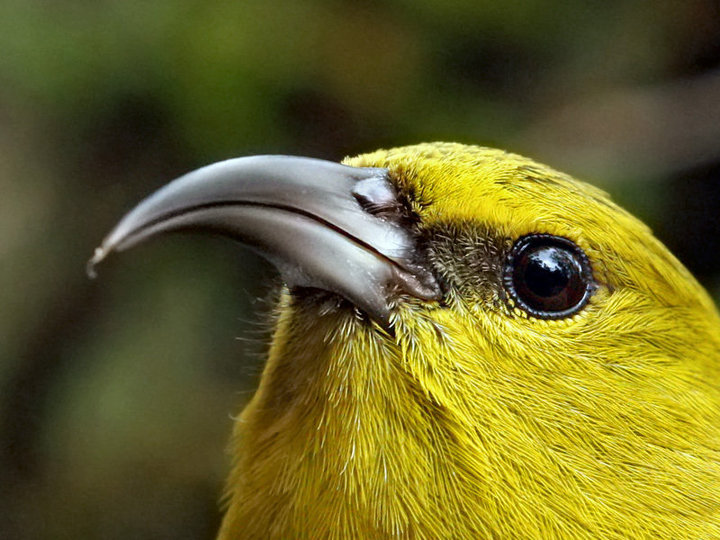Former KFBRP field assistant Travis DuBridge has just released a very informative twenty-minute documentary that explains the unique challenges that Hawaiʻiʻs forest birds face, and how KFBRP staff members are helping to fight for their existence. The video details how mosquitos and diseases like avian malaria are the most challenging of these threats. Travis will take you into the remote regions of the Alakaʻi with the KFBRP field crew to give you a glimpse of the day-to-day routine of those who work to preserved these threatened and endangered birds.
The story begins before the arrival of westerners, when Hawaiʻi’s forest birds were abundant. At one time, they could be found from the mountains to the sea, but many things have changed since then. Much of their habitat has been destroyed, and mosquitos, which are not native to Hawaiʻi, are now common and abundant. The introduction of mosquitos has been particularly detrimental because mosquitos carry diseases, diseases that these forest birds have not previously been exposed to and thus have little or no immunity. As mosquitos found their way into the forest, these birds retreated to higher elevations where temperatures were too cool for mosquitos to effectively reproduce. Unfortunately, climate change is now warming these areas, leaving only a small safe-haven for these birds. This area is the Alakaʻi, where KFBRP focuses on their research.
In this documentary, you will follow the KFBRP field crew as they brave steep hiking trails and endure chilly, wet conditions, to spend weeks at a time in the remote areas of the forest to study Kauaʻi’s forest birds. Travis shows you how the crew monitors bird populations, as well mosquito abundance and the prevalence of avian malaria. You will also see how they help to control mosquito populations while in the field.
Travis and his colleagues Theo and Stephanie, must hike through slippery stream beds to set up traps near the edge of the stream in order to collect female mosquitos. These traps are checked regularly and all mosquitos that are collected are sent to a lab on the Big Island for testing. You will also learn how Travis and the rest of the KFBRP crew conducts regular stream surveys to look for mosquito larvae. While several different genera of mosquitos can be found in Hawaiʻi, the researchers are particularly interested in Culex species because these are the mosquitos that carry the parasite that causes avian malaria.
When Culex populations are found in stream pools they are treated with a bacteria called BTI. This treatment has been used and proven in many locations around the world, but the results need to be replicated in Hawaiʻi before it can be used on regular basis. The documentary explains how KFBRP field crews are helping to test these results. Before the pools can be treated, insect populations in the pool must be counted and described and after treatment, the populations must be documented again.
BTI treatment is considered to be safe because it only targets mosquitos, black flies, and fungus gnats, and seems to have no affect on other insects, animals, or humans. The treatment works by attacking the cells in the mosquito larvae’s gut after ingestion. As expected, after treating pools in the Alakaʻi, the crew finds dead mosquito larvae, but none of the other insects in the pools are affected. This treatment looks promising.
The documentary also looks at other methods of mosquito control in Hawaiʻi including the use of of a bacteria called Wolbachia. Wolbachia has been used on the mainland to help reduce the spread of Dengue and the transmission of other human diseases. In Hawaiʻi, Wolbachia is being studied by University of Hawaiʻi as a form of mosquito “birth control”, but this type of treatment would require support from both government agencies and the public. Researchers are hopeful that this could be an option for mosquito control in the future. Until then, KFBRP crews will continue their mission to protect Kauaʻiʻs forest birds.






